
Power failures and their consequences
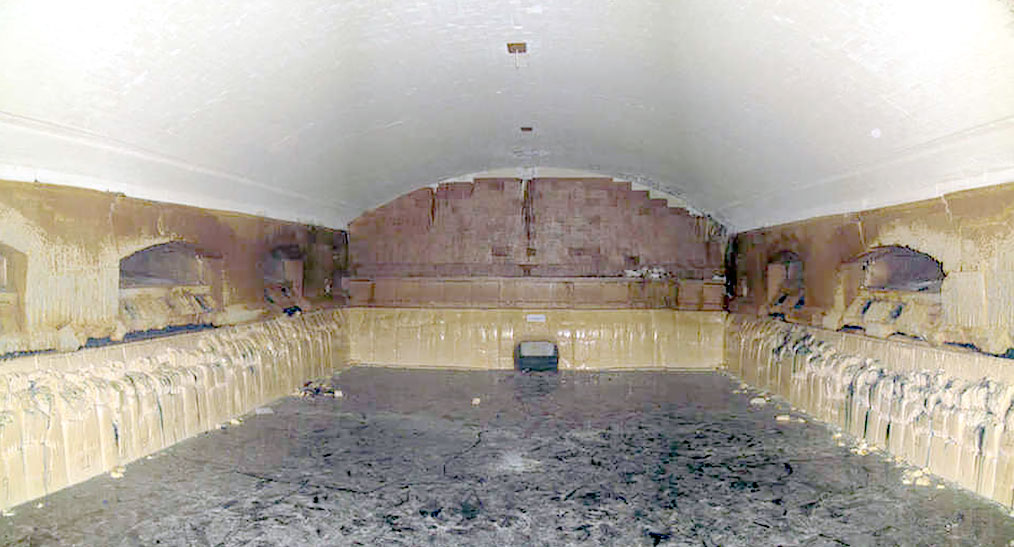
Barry Dillon, Forensic Services Asia
Many of the claims that we attend began with a power failure. We say began, rather than caused by, because when we look deeper into the accident, usually we find there are other factors that turned what should have been an event of no consequence (to insurers) into a major claim.
Let’s start by putting these power failures into perspective. When you have grown up in Asia or have spent a good part of your life there, power failures seem a part of life. Even if you originally came from Europe or North America, there is a tendency to forget how it was. This view is reinforced by the news attention that is given to occasional outages in industrial countries (New York City blackout of 1977, Northeast Blackout in USA in 2003). You think to yourself, ‘it happens there as well’ and this is further reinforced by the endless predictions that unless billions are spent on upgrading grids, power outages will become the norm (in whichever industrial country is being critiqued).
In reality, the power supply in western countries is remarkably reliable. Instead of trying to compare countries by official statistics, we will recount two reports in fire protection journals. In the first, the fire protection in a multistorey building in Melbourne was being reassessed and it became necessary to answer the question, how reliable was the power supply? The electrical history of the building was researched and it was found there had been 5 minutes loss of power in 20 years. A similar exercise was performed for the (formally) Sears Tower in Chicago and it was found that a combination of local supply plus backup meant that power had never been lost over the life of the building.
Compare the above with your own experience in whichever building you are in as you read this article, presumably in Asia. That’s the difference.
For the purposes of this article, we are using the term ‘outage’ to include both total power cessation and brownouts. The latter term, part of everyday vocabulary in the Philippines, should strictly be separated into voltage drops and rises, since the effects can be quite different. However most of the time a brownout is a significant voltage drop, which can cause machinery to trip, and this often has the same consequences as total power loss.
There are a number of industries where equipment is particularly vulnerable to power failures. These are invariably ones where there are large masses at an elevated temperature. Damage mechanisms vary, but can typically be categorised in terms of lack of cooling, liquid metal or glass breakouts, and damaging expansion/contraction. All these are predictable, so in an ideal world critical equipment is identified, duplicated and alternate means of electricity provided.
How quickly can a failed electrical supply be replaced by a backup? According to our electrical engineers, in practical terms power failure detection in ‘incident prone’ areas can mean a built-in time delay of up to 15 seconds for confirmation that the failure is genuine and not transient.
Allow another 5 seconds for cranking and another 10 to be up to speed and ‘pumping’; say 30 seconds overall for a fast response. An old unit may take 60 secs, but no longer. The situation prevails where there has been no provision made for a seamless transition by means of either a flywheel or battery backup system.
The advice of our engineers is that this level of response is sufficient to stop almost all damage for industries in the broad categories indicated above. Had there been reliable electrical backup for the incidents to be described, there would have been no claims.
We will now briefly describe some occurrences that have prompted this article. All are in Asian countries.
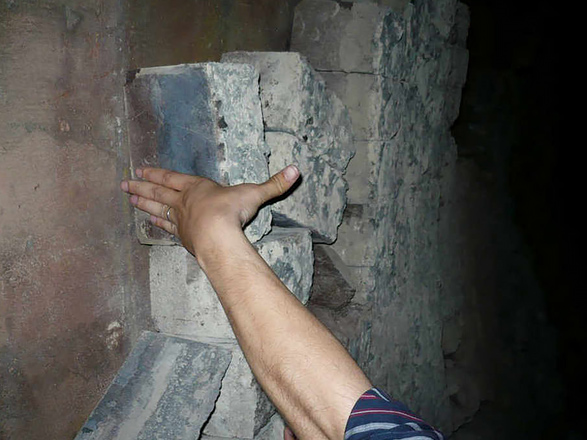
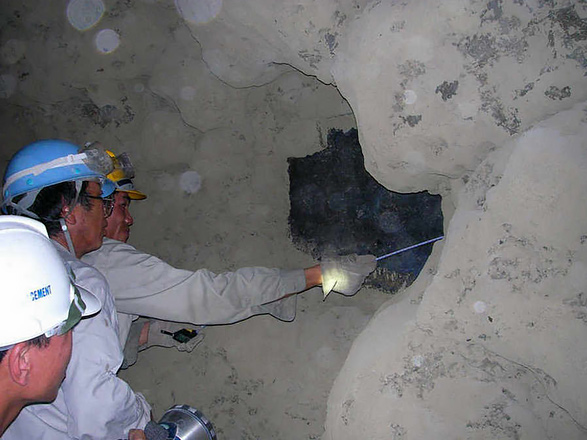
An engineer at a cement factory in Vietnam, that had had a series of stoppages because of power failures. Left: illustrating how much a brick has been reduced in thickness. Right: looking at a hole in the refractory that would otherwise protect the steel shell. The localized loss of refractory caused the kiln to glow red on the outside.
- A cement factory experienced tens of stoppages (from lack of power) during the first two months of operation. The constant cooling/heating caused loss of refractory, with two refractory replacements being required within the two months when normal refractory life would be two years.
- A thermal oil heater had tube damage from interruption to oil flow. An emergency pump did not operate because a dedicated diesel-based power supply would not start. This backup had not been tested for months.
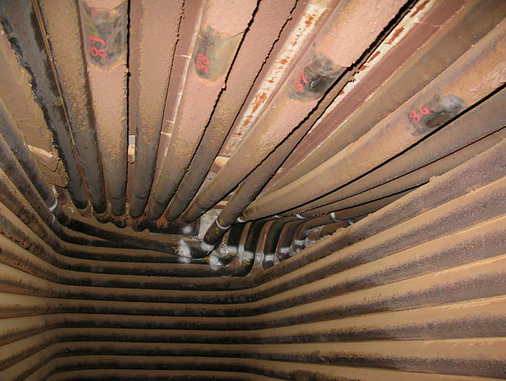
Distortion of tubes in a thermal oil heater, caused in part because there were no backup batteries for portion of the distributed control system.
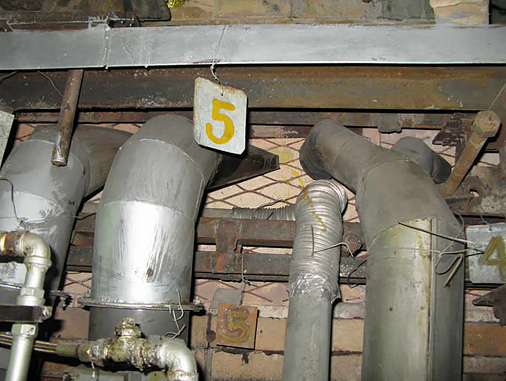

Left: Air-cooling ducts on the outside of a glass furnace. Cooling was lost when power was lost for 9 hours. Right: Inside of glass furnace, said to have been damaged by the loss of cooling.
- At a glassmaking factory in the Philippines the power failure was self created, but no less illustrative. A fire burnt out the electrical cables to a compressor for external cooling fans. There was a delay of 9 hours before the supply was reinstated, with the factory having at one stage to send someone out to shop for spare cable.
- At almost all factories the changes in temperature during the outage can be followed in detail by the operators in a control room, who can hopefully take mitigating action. This is because distributed control systems invariably have an uninterruptible power supply. However at one factory the local electrical panel for a new heater had no such supply, so that the operators were operating blind during a crucial 20 minute power outage.
- At a complex petrochemical factory an extended outage was followed by intensive efforts to get the process back into operation. It was subsequently recognised that these efforts were perhaps too pro-active, probably exacerbating damage. As one manager stated, ‘so much to do, so few engineers’.

Reformer tubes fractured after supplies were cut off by a power failure.
While 20:20 hindsight is deceptively easy, we would nevertheless maintain that the accidents described were predictable and therefore avoidable. We suggest the following need to be considered during risk assessment.
- Does the plant have equipment vulnerable to damage by power failure?
- Given a higher probability of power outage (in many countries in Asia), is it sufficient for a plant to be a copy of the same in USA/Japan/Germany? Does additional equipment need to be installed to cater for seemingly inevitable power failures?
- Do operators receive specific instruction on what to do in the event of power outage? Are there written procedures?
- Has staffing taken emergencies into account?
- Is emergency equipment tested regularly? Are there records of such?
- Is consideration of the installation of a stored energy system applicable or practical?
For investigations into power failures and their consequences, contact any of the following consultants at FSA.
Need clarity on a large and complex incident?
Our forensic consultants are ready to investigate, analyse and support you – from claims to courtrooms.
